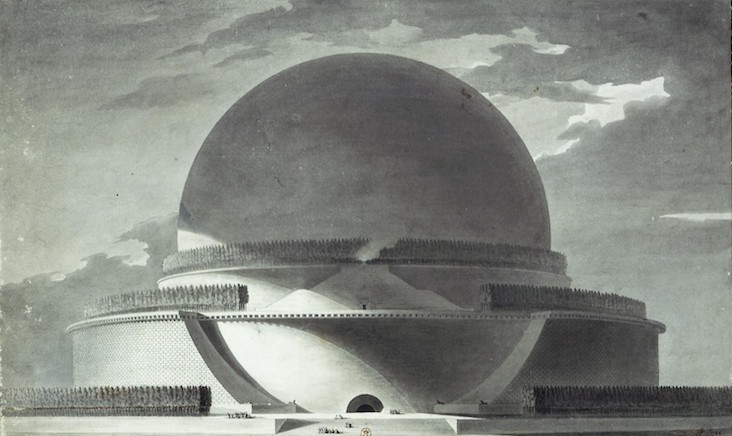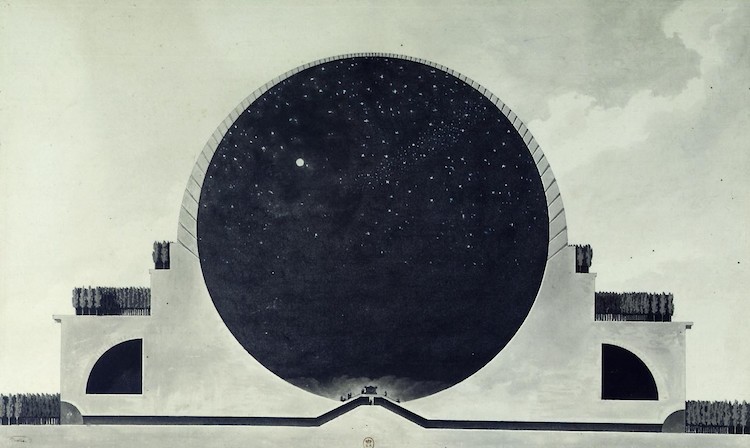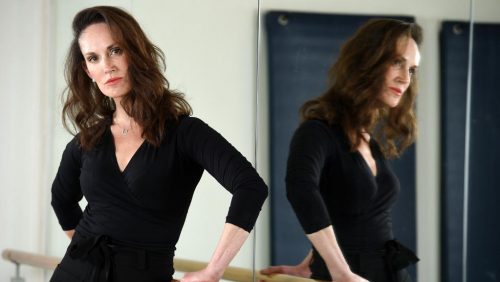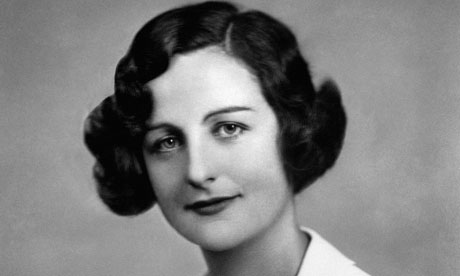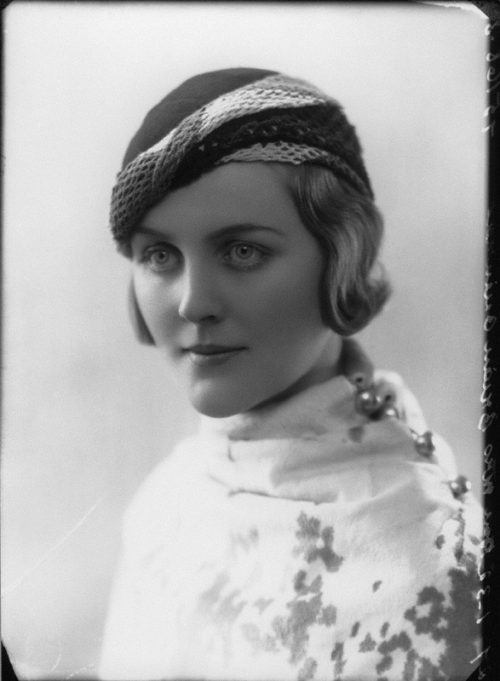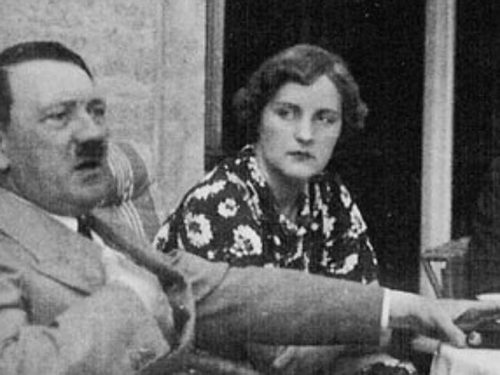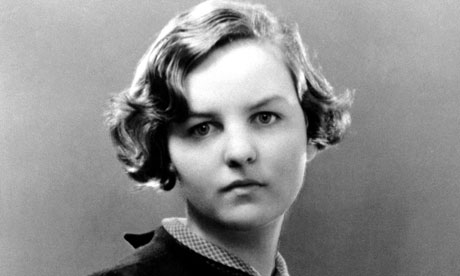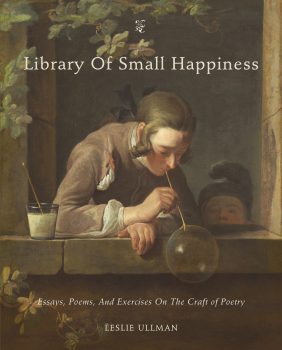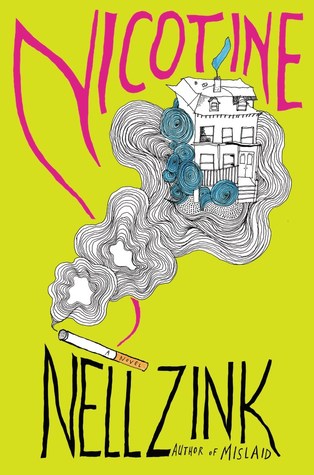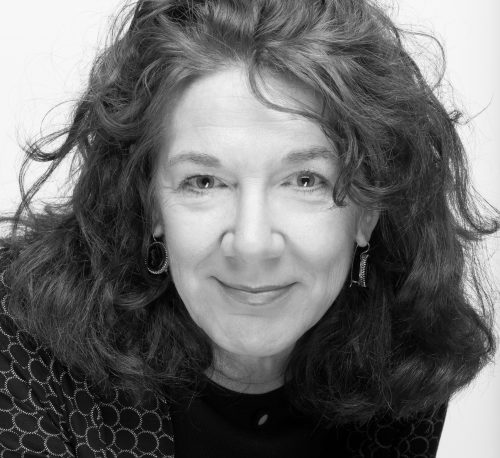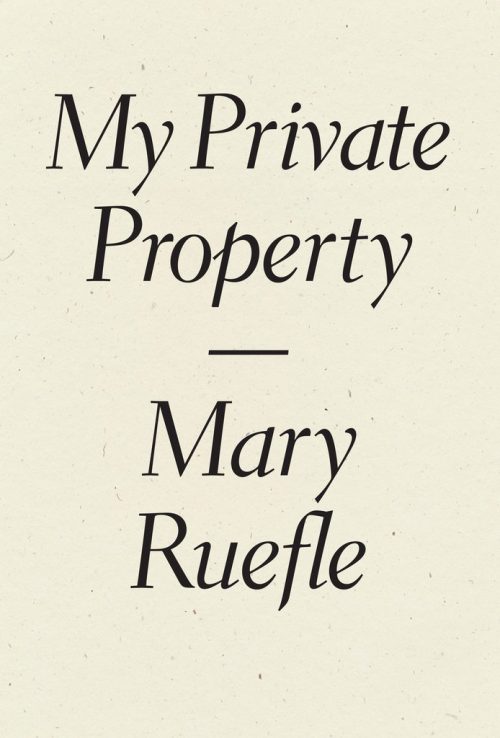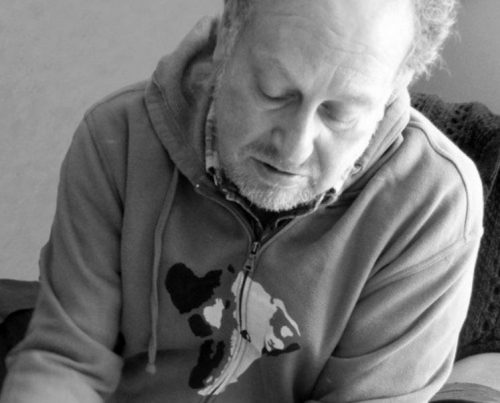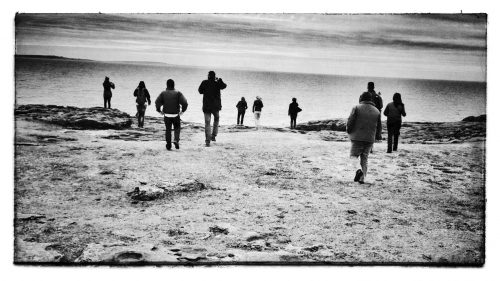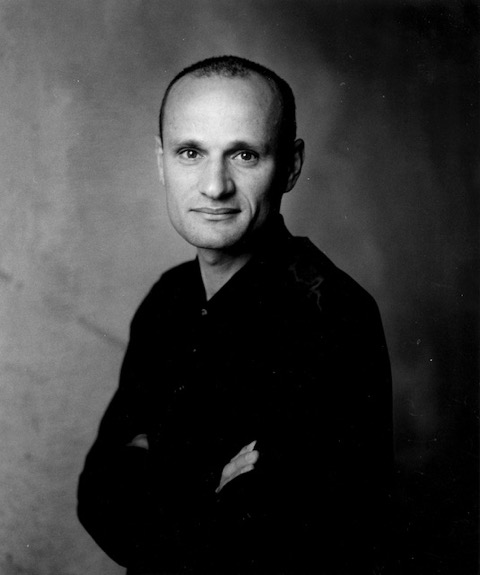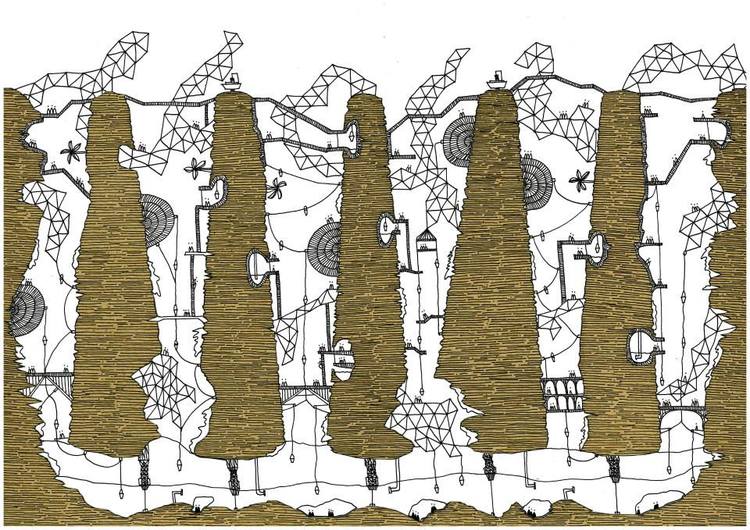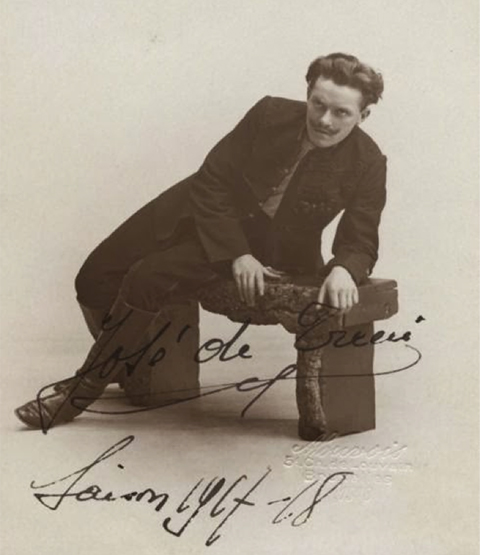 José de Trévi
José de Trévi
x
In his 1944 existentialist play No Exit, Sartre famously wrote, “Hell is other people.” He was, of course, referring to the “perpetual ontological struggle of being caused to see oneself as an object in the world of another consciousness,” but the phrase has been misinterpreted and misused to suit our needs ever since. In my experience, Hell came in the form of a man named José de Trévi, a Belgian tenor who sang with the National Opera of Paris from 1930 to 1943. Tenors at that time were regarded as “princes among singers,” and de Trévi was a rare breed of tenor, one who could sing outside a tenor’s typical vocal range. Because of his talent, he made a career singing the most coveted lead roles in the most prestigious theaters all over Europe, specializing in some of Wagner’s most famous operas: Tristan and Isolde, Tannhauser, all four epics of the Ring Cycle. Over the course of his career, he sang in over three hundred performances throughout France, and was hailed repeatedly by critics for his singing, his acting, and his dashingly good looks.
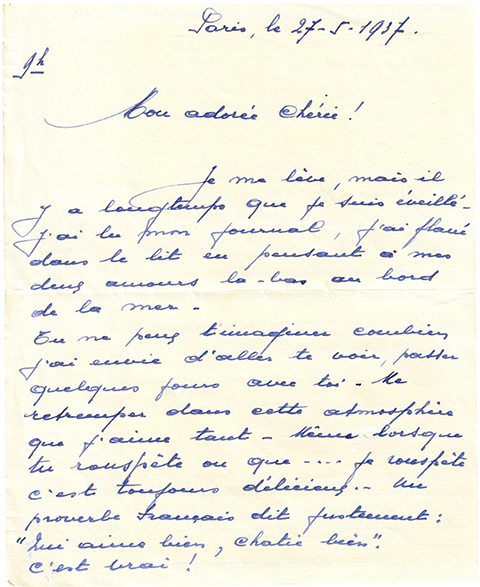 Excerpt of letter from José de Trévi to his wife, Elsa
Excerpt of letter from José de Trévi to his wife, Elsa
All letter excerpts are from the author’s personal collection.
I first encountered de Trévi when I purchased a couple of his letters at a Parisian flea market in August, 2014. The letters were correspondences between him and a woman named Elsa—who I learned through the letters was de Trévi’s wife. I was captivated by the outpourings of “my dear beloved” and “my adored love” that de Trévi showers on Elsa. He tells her how much he misses her and their young son, Billy. He writes that he hopes he will see an end to their miseries soon, that he wants only to be with his little family. “But, my beloved,” he writes in one letter, “I am obligated to stay here, obligated by necessity, by money—that accursed metal that prevents you from doing many things, and prevents me from seeing those that I love!”
 Elsa and Billy
Elsa and Billy
His letters offered small glimpses into the personal life of a man who, in the 1930s and early 1940s, was a pretty big deal. But aside from a couple of short biographical articles about his career and a few brief mentions in out-of-print books about the opera, I could find nothing else about de Trévi. It seemed that he was quickly disappearing from recorded history. So I kindly took it upon myself to track him down and tell his story.
At first, it was all fun and games—deciphering his handwriting, translating his letters from French to English, digging into archives to read reviews of his performances. I fancied myself a kind of private detective, and everything de Trévi wrote about the opera, the people he spent time with, the way he spent his days, even his tone and the expressions he used were clues into who he was. But de Trévi’s life still remained largely a mystery. I could find nothing about who Elsa was, why de Trévi left the opera, or even how he died. I followed every lead and hit hundreds of dead ends and gave up on the project altogether more than once. And then, after a time, I’d feel the nag of unanswered questions, and I’d return to the books, the operas, the letters, and let de Trévi lure me back into the lonely hole of biographical research.
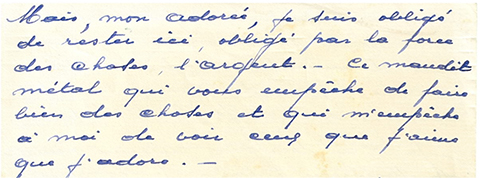
If you are wondering if these road blocks I’ve encountered aren’t due to my amateur status as a biographical researcher, I’ll admit I’ve wondered the same thing. So I interviewed the much more seasoned biographer, Deborah Baker, who has written three critically acclaimed biographies on vastly different subjects. Her first book In Extremis was a Pulitzer Prize-nominated biography about the life of the writer Laura Riding, an obscure and enigmatic poet who was one of the most influential figures in British-American literary history before she renounced poetry and spent the last fifty years of her life as a recluse in the swamps of Florida. Baker’s second book, A Blue Hand: The Beats in India, traces Allen Ginsberg, a poet and leading figure of post-WWII counterculture, on his spiritual odyssey in India in the 1960s. Baker’s third book, The Convert: A Tale of Exile and Extremism, was a finalist for the National Book Award and my introduction to her biographical chops.
The Convert is about the life of a woman named Maryam Jameelah, born Margaret Marcus into a secular Jewish family outside New York City in 1934. In her teenage years, she converted to Islam, and in 1962 she moved to Pakistan to actively live her faith under the guardianship of a man named Abdul Ala Mawdudi. Mawdudi was an influential leader in the mid-century Islamist revival and the father of its political movement. While living in Pakistan, Maryam began publishing essays on the evils of Western culture and the righteousness of Islam, and quickly became an active player in the growing divide between Islam and the West.

Baker’s interest in Maryam, like mine, began with letters, a set of twenty-four that she found in the archives of the New York Public Library. And like me, she quickly became obsessed and spent the next several years reading and analyzing Maryam’s letters, her diaries, and her published essays to understand why she converted and how Islam served her spiritually. What Baker uncovered was a life fraught with peculiar events, strange circumstances, and ever-straining relationships with those who took Maryam in. Almost immediately after her arrival, Mawdudi began to pressure her to marry, though Maryam showed little interest in anything but her work. A year after her move, Mawdudi had her committed to an insane asylum, where she spent several months before being released into the guardianship of Mawdudi’s friend and political colleague, Mohammad Yusef Khan. Within days, Khan married Maryam without Mawdudi’s permission, and their relationship grew further strained. Eventually, Baker traveled to Pakistan to meet Maryam and discovered not the idealistic and hopeful woman of her letters, but a lonely old woman whose dreams of Islam did not seem to match her lived reality.
The book is an intersection between Maryam’s story and Baker’s tale of discovery. It weaves back and forth between Maryam’s letters and the events in her life and Baker’s research and reflections on what she has found. Reading Baker’s finished work on Maryam Jameelah was like looking at a perfect example of what I wanted my story of de Trévi to be. It combines mystery and adventure, is insightful and reflective, and follows Maryam’s life from her troubled childhood, to her awkward teenaged years, to her conversion to Islam. It details her life in Pakistan, probes into why she is committed to the insane asylum, teases out the truth about the circumstances surrounding Maryam’s marriage to Khan, all while exploring some of Baker’s own burning questions about cultural perspectives, the meaning of faith, and the seemingly irreconcilable tensions between Islam and the West.
But, misery certainly loves company, and so I was thrilled to learn that Maryam, as a research subject, was no less hell-inducing for Baker than de Trévi has been for me. In both the book and an interview I conducted with Baker about her research, I discovered just how frustrating biographical research is. It is not all fact-finding and mystery-solving. First of all, it involves a ton of tedious background research, road blocks, and dead-end leads. Second of all, you have to work for the truth. And finally, you spend years of your life researching and analyzing your subjects only to find that their lives are nonlinear, chaotic messes that you have to put into some semblance of a narrative.
Of course, if I had read the epigraph in the opening of Baker’s book, I might have avoided the frustrations altogether by never choosing to engage with de Trévi in the first place. The epigraph reads: “Whoever undertakes to write biography binds himself to lying, to concealment, to hypocrisy, to flummery….Truth is not accessible. —Sigmund Freud.” But I skipped it or at least didn’t pay much attention to what Freud had to say, and so I’ll share with you now three hard-learned insights into what makes other people so hellish to research and write about.
x
1. Other people play hard to get.
One of the first things that drew me to de Trévi was his obscurity. There were a few biographical articles written about him, but they were just brief overviews of his career path and the major roles he played. The letters gave me some details of his personal life not present in the biographical articles about him, such as the name of his wife and the fact that he had a son, but there were whole pieces of his life that remained opaque, and I was excited to be the one to unearth the mysteries. But obscurity is a double-edged sword. On one hand, it makes for a more interesting subject, but on the other hand, the lack of information is an obvious roadblock to research.

In researching de Trévi, I was particularly interested in why his career with the opera ended in 1943. There was plenty of evidence in his letters to show that at least through 1942, he was demanding more roles and new contracts, and that he was trying to continue singing until at least as late as 1955. So had he left willingly, or was he forced out? Had his voice begun to fade, or had he gotten too expensive, or perhaps too demanding, to keep on the cast? One article said he was let go for refusing to sing in German, but I couldn’t verify this claim, and so I added this possibility to the list of questions the end of his career posed.
Unfortunately, if your subject hasn’t given you the answer himself, a simple Google search probably isn’t going to yield an answer either. Furthermore, finding the answer to a question usually doesn’t mean finding the answer directly. When I began researching de Trévi’s career, I thought that I was looking for a letter or contract or newspaper article that would tell me exactly what had happened, but of course, there was nothing of the sort. But answers are usually buried in clues, and finding them means researching around the question itself, asking new questions and speculating about possible outcomes. And this means doing an absurd amount of background research so you know what questions to ask of your question.
If this seems obvious to you, then you are probably someone who pays attention to epigraphs. I, on the other hand, as someone who likes to just dive right in, thought that because I was writing about a particular person and not a history of the French Opera, a general understanding of the culture and time would suffice. I quickly learned that without being nearly an expert on pre-WWII Paris and the French Opera—or at least consulting with one—I wouldn’t know how to put together the clues given to me in the letters.
I looked to Baker’s book to see the kind of research she had to do in order to write the story. In all, she cites forty unique sources and sixty-eight unique citations, excluding the letters themselves. But she told me in our interview that, even before she began pursuing the answers to specific questions about Maryam, she read hundreds of books on Pakistan and political Islam, India, anti-colonialism, and general history of the 40s, 50s, and 60s in the Middle East and America. She also read English translations and analyses of the Qur’an, scholarly works on Islam and the modern world from both Islamic and Western perspectives, and any available biographical information about the people Maryam knew, most extensively Mawdudi. By immersing herself in Maryam’s world and her immediate environment, Baker was better positioned to answer questions raised by Maryam’s strange life.
 Deborah Baker
Deborah Baker
One of these questions that the book tries to answer is why Maryam was sent to the insane asylum. In a letter home to her parents, Maryam writes that Mawdudi sent her to the asylum for various “transgressions” she had committed against him, but she does not go into detail about the nature of those transgressions. She also expresses fear of Mawdudi’s politically driven intentions, leaving Baker to wonder about the circumstances around the incident.
One of the great things about Baker’s book is that we can actually follow her train of thought as she investigates a particular question. In order to understand why Maryam was committed, she turns first to Maryam’s character, asking herself what she already knows about Maryam: she is outspoken, idealistic, and faithful, and though she rejects the West, is still of the West. She can then ask herself what the transgressions might have been: an argument with Mawdudi about a tenet of the Qur’an? Maryam’s refusal to marry anyone Mawdudi suggested? Or could they have been related to some cultural misunderstanding on Maryam’s part? Baker also asks questions of Mawdudi’s character: What were the nature of his religious beliefs? How did he feel about Maryam? What was his involvement in politics? Each of these questions gives way to new, broader questions: How does Islam view unmarried, working women like Maryam? How does it view mental illness? What was the political atmosphere at the time?
Every avenue of research that Baker pursues requires a constant interplay between Maryam’s character, Mawdudi’s character, the events in Maryam’s life, the social and cultural factors at play, and the larger sociohistorical backdrop in which the incident took place. And every possible answer gives way to new questions, new speculations, and asks Baker to reassess what she already knows. Answering the question, then, is not always a matter of finding the answer, but of eliminating possibilities and inferring an answer based on what you know about the person, her immediate environment, and her place in history. In the end, Baker concludes that Maryam suffered from some kind of mental illness, but that she was also a victim of the cultural divide between the Middle East and the West.
Sometimes, though, even your best efforts to answer a question yield nothing but dead ends. Where this is the case, Baker suggested “hanging your hat on something else.” In other words, don’t get too attached to a particular fact you hope to uncover about your subject’s life. Rather, allow your research to make way for something else—another dramatic moment or a new revelation about your subject’s character—that will hold your story up.
I have not yet found an answer to why de Trévi left the opera, and perhaps I never will. While I thought that this would be the scandal around which the rest of my story revolved, I’ve had to let it go for now and pursue answers to other questions. But there is also space in the story for unanswered questions. Toward the end of The Convert, Baker asks: “How well did Maryam’s pronouncements on the true Islamic way of life serve her as a wife and mother? How well did her frail spirit withstand a life defined not by abstract notions but by whooping cough, typhoid, malaria? Had she achieved something noteworthy, or had she squandered her life on a dream? If the story didn’t end happily, how did it end?” (Baker, 211). She never finds answers to these questions, but by acknowledging them, she reveals something about the mystery and complexity of Maryam’s character, and of life itself.
x
2. Other people are liars.
If unanswered questions and dead ends are sound reasons not to engage in biographical research, then the ability to go through their personal letters and diaries is a rather tempting reason to engage. In fact, I’ll admit, my first interest in de Trévi was born of sheer nosiness. I pored greedily through his letters hoping to find some mention of an affair or confession of a crime or exposé of a deep, dark family secret. But I soon learned that even in personal letters, people are not so forthright as you’d hope them to be. You really have to work for the gossip.


For example, in one letter to Elsa, de Trévi writes, “As you know, it is necessary that the affair of M.C. gets definitively settled.” In another letter, he writes, “I see more and more that nothing has been done about M.C.” But he’s never told me who M.C. is, and I’m left feeling like an outsider to an inside joke, or even worse, an outsider to what I am convinced was the juiciest secret between them.
Not only does de Trévi leave out information, but also he makes conflicting claims about his intentions and desires. Remember when he told Elsa how much he longed to be with her but had to stay in the opera for money reasons? Well, in another letter that same year, 1937, he writes to Elsa that he had a busy upcoming winter season at the opera and promised that this would be his last season, the end of their miseries. But in letters that I discovered in an archive, written around the same time by de Trévi to the director of the opera, Jacques Rouché, de Trévi shows no sign of wanting to leave the opera at all. In fact, right up through the last letter of the collection dated in 1942, five years after he tells Elsa he is going to leave the opera, de Trévi demands to sing more roles, claiming that he is the Wagnerian tenor of the Paris Opera. Reading these letters, I couldn’t help but feel that de Trévi had misled Elsa and me, that in fact he never wanted to leave the opera, that he was an artist first and a father second.
Letters and other personal documents are full of missing or misinformation like this. Some amount of missing information is to be expected, of course, because like everyday conversations, the person at the receiving end of the letter already knows what is being referenced, and as a researcher, you are eavesdropping halfway through. But in many cases, the writer is intentionally vague or misleading in order to deceive the recipient, or perhaps keep a secret between them from a third, unintended reader, such as a nosy but well-intentioned researcher like myself.
Even the most intimate letters, where we hope to find honest confessions, and diaries, where we expect a writer to really open up, have an implicit audience and therefore, the writer will twist his thoughts, feelings, and accounts of events ever-so-slightly—or perhaps drastically—in the interest of presenting a positive public view of himself. The person on the page, then, is a kind of invented persona. But where the writer slips up and we can spot a misstatement or a lie, we see glimpses of the real person behind the façade.
Spotting a lie can be as simple as recognizing an inconsistency with a known fact. Maryam’s earliest letters comprise a memoir published in 1989 called Quest for the Truth: Memoirs of a Childhood and Youth in America, 1945-1962: The Story of One Western Convert. In these letters, Maryam describes being bullied at school, at summer camp, and generally feeling estranged from her own family. She details her questions about her Jewish faith and growing fascination with Arabic history and culture that gradually turns to a sympathetic understanding of them, to her parents’ disapproval. In letters written after her move to Pakistan, Maryam describes finally feeling a sense of purpose, of meaning, and of home among her Islamic brothers and sisters in Pakistan (Baker, 18). Through these personal pieces of writing, Baker sees Margaret Marcus evolve from a troubled misfit, to a soul-searching sympathizer with the Arabic plight, and finally, to Maryam Jameelah, devout Muslim and champion of Islam.
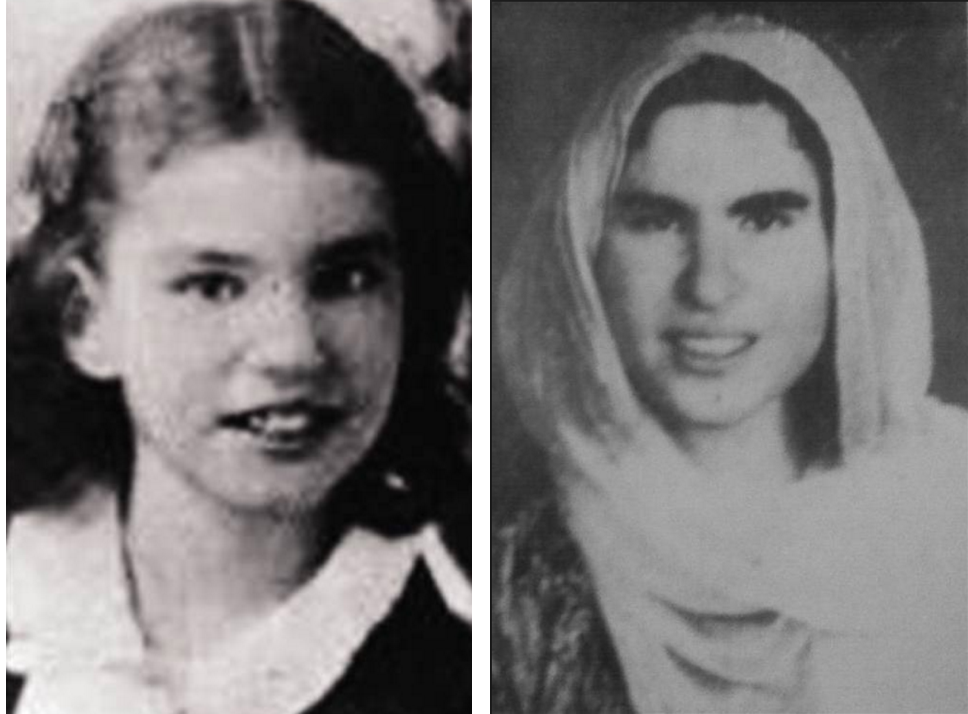 Left: Young Margaret Marcus, Right: Maryam Jameelah
Left: Young Margaret Marcus, Right: Maryam Jameelah
But Maryam was also a liar. Aside from the memoir’s too-long title with one too many colons, it had a few issues. First of all, Maryam incorrectly dates one letter November 31, 1949. Secondly, she refers in the letter to a speech delivered by Eleanor Roosevelt at Maryam’s high school the previous evening, which, Baker discovered in a newspaper article about the event, actually wasn’t delivered until the following February, 1950. It seemed that Maryam had forgotten to fact check a few things, but luckily for us, Baker hadn’t. She determines that the letters were inauthentic, that they had been fabricated as a kind of backstory by Maryam while she was living in Pakistan.
We can also spot lies by being aware of conflicting accounts and statements, either within the writer’s own writing, or between the writer’s accounts and the accounts of another person. In letters she wrote home to her parents, Maryam describes her life with Khan, “I am now home with my Khan Sahib, my co-wife Shafiqa, her children and aging mother, and many relations… After a long search, I have found my place and I will never exchange it for any other. You no longer have to worry about me. I believe I’m going to be very happy now” (Baker, 159). But this fairy-tale ending to Maryam’s strange life began to show cracks after Mawdudi’s son, Haider Farooq told a different version of the story, one that reveals Maryam to be an aggressive, mentally unstable woman who essentially tricks Khan into marrying her. Of course, Farooq might have been lying as well. But Maryam had already lost a little credibility, and even in her own writing Maryam shows a lack of interest and, in fact, an aversion to marriage. Baker wondered if this sentiment was sincere. She asks in the book, “For whose benefit…had [Maryam] narrated her happy ending?…Had she written this to allay her parents’ fears about her welfare or to establish her triumph? Was it meant as a piece of entertainment or of propaganda?” (Baker, 191).
A third way lies are revealed to us is through inconsistencies in the writing itself. When we read letters, we get accustomed to the tone, style, and ticks of the writer, and sudden changes in these established patterns can alert us to some kind of lie. In the case of the fabricated letters, Baker was further tipped off by the fact that while in her other letters, Maryam always referenced family news, these letters were missing any reference whatsoever. Baker notices a similar inconsistency in the letter in which Maryam explains that she has been sent to the insane asylum. Whereas Maryam tends to be wordy and detailed about everything else in her letters, in this instance, she is reserved, almost flippant about the incident. Baker suggests that there is something she doesn’t want to admit to her parents or even, perhaps, to herself.
What, then, do we make of all the lies? While they can be frustrating and require more outside research, they also reveal more about our subjects than the content of the letters themselves. Truth here isn’t just about the accuracy of stated events and feelings, but about the implications of the writer’s lies and secrets. What motivates them to keep secrets, to misstate things, to invent other selves? How do they view themselves? What agendas, desires, denials are revealed about the subject through their lies? In considering Maryam’s fabricated letters, Baker writes:
Maryam had composed these letters as missives to posterity, a Cinderella backstory plotted to foreshadow how her embrace of Islam had rescued her from America. The evils of Western civilization amounted to no more than a stage drop for her private travails. It was as if [Margaret] never ceased mining the material of her own life to establish certain proof that Islam was the answer to all the riddles it posed. (Baker, 208)
Baker doesn’t believe that Maryam necessarily made up the stories about her childhood, though she does disregard their content. But the fabrication of letters reveals something deeper about Maryam: her desperate desire to prove that Islam had been the solution to all of her problems and, more generally, the problems with Western culture. Furthermore, the positive spin Maryam places on her life in Pakistan tells a much bleaker story than if she had admitted that things weren’t going so well right up front and begs the question to what extent she wanted to believe, or did believe, her version of the story.
With personal documents, we are not dealing with facts, but rather secrets, personas, and lies, and it is up to us to interpret them, distinguish fact from fiction, and determine what the lies are saying about our subject. The real truth about our subjects often lies not in what is credible, but in what is false. Where the views diverge from reality or statements differ from facts, we see our subject ripped wide open, their imaginations revealed, and their deepest desires exposed.
x
3. Other people’s lives are messy.
When I started researching de Trévi, I was under the delusion that with enough persistence, I could uncover his entire story from birth to death, unearth all of his secrets, and discover some universal truth about opera singers or history or life. For nearly two years now, I’ve pursued every lead, followed every avenue of research, and unearthed a smorgasbord of facts and details and speculations about de Trévi. It is easy to get caught up in secrets and lies, and tempting to continue the research until we’ve answered every question. But sooner or later, we have to stop researching and start telling the story.
 José de Trévi: photo and signature
José de Trévi: photo and signature
Lives do not unfold in a narrative fashion like we’d hope, and as researchers, it is up to us to make sense of what we have, to connect the dots and create some order out of all the chaos. So after we’ve uncovered everything we can about our subject, what do we actually have? First of all, we have a general chronology of the events in the subject’s life, a list of events pulled from letters and interviews and historical accounts of the person. De Trévi’s major life events included his first performance with the French Opera, his marriage, the birth of his son, and the end of his opera career. From such details as this, we can identify particular dramatic moments, conflicts, and places that we can turn into scenes and settings. With some imagination, for example, I can write the scene where he first steps onto the stage or a scene in which he pens a letter to Elsa from his room at the Hotel d’Iéna. We also have a general historical chronology in which these events took place, in this case, just before and during WWII in Paris. We can see where the events in the person’s life might have intersected with larger events. For example, in German-occupied Paris in the early 1940s, the German soldiers made up the majority of theater audiences throughout Paris, and de Trévi would likely have sung for them on many occasions. These historical events give us a more believable and interesting backdrop and shed light on the lives of our biographical subjects. Finally, we have a sense of character, inferred from both the truths and the lies we discover in their writing, from what others have said about them, and from placing them in their sociohistorical surroundings. Sounds like all the makings of a pretty compelling narrative, if you ask me.
How then do we create order out of the chaos? Baker suggested defining the scope of the narrative. A biography does not need to give equal weight to, or even to include, every moment of a subject’s life. Defining the scope means, first of all, determining the chronological boundaries of the narrative. This is determined by both what information is available to us, as well as where we think the most interesting and dramatic moments are. In Baker’s book, for example, she focuses Maryam’s story primarily on the part of her life covered by the letters, from her decision to move to Pakistan, to her arrival, to the insane asylum and finally, to her marriage to Khan. She does some backstory about Maryam’s childhood, but covers her entire adult life in Pakistan after her marriage, including her life as a mother, in less than a chapter of the book.
Defining the scope also means determining the larger focus of the story itself. What themes can we tease out of our subject’s life, and what larger questions does their life answer? Baker asked me to consider my own story about de Trévi. Is it a love story? A war story? A 1930s Paris story? These things are not mutually exclusive, but defining the scope of the narrative can help us see connections between events in the subject’s life, and between the subject’s life and historical events, and we can ask how this particular life reflects life in a wider sense and what questions it answers for us. In The Convert, Baker asks What is the nature of the divide between Islam and the West? Maryam’s story, then, encompasses the larger cultural, historical, and metaphysical issues raised by this question. But by encompassing certain themes, we necessarily exclude other themes and issues, which helps to focus and direct the story and the research.
Creating order is also a matter of structure. Though we are attempting to recreate a life, we do not need to put that life into chronological order. The Convert is structured, not according to the unfolding of events in Maryam’s life, but rather according to Baker’s gradual discovery of Maryam’s life. The book begins with what is arguably the most pivotal moment in Maryam’s life, her move to Pakistan, and then follows Baker’s line of questioning as she investigates Maryam’s life and tries to answer the root of the disconnect between Islam and the West. The story jumps back and forth through time, as each question that arises for Baker necessitates new investigations into Maryam’s past and inspires new reflection in Baker’s present. This structure in turn teases out the peculiarity of certain events, heightens the mystery, and allows the questions themselves to create tension and drama within a larger story.
Finally, creating order is a matter of self-reflection, about answering why we chose this particular subject in the first place. For Baker, Maryam Jameelah’s search for faith and truth mirror her own and help her confront her own biases and assumptions about the world in which she lives. At first, I didn’t think my de Trévi project was anything more than a completely selfless attempt to recreate another person’s life. But one residency, when I was excitedly telling a faculty member about the letters I’d found and my research of de Trévi, she stopped me mid-gush and said, “You love him, don’t you?” The question took me by surprise, but she was absolutely right. As much as I hate de Trévi for coming into my life and sending me on an endless goose chase to discover his, I love him, because he tells me something about myself and about the fragility and purpose of human life. De Trévi ends one of his letters, “Goodbye my dear, adored Elsa. You are my whole life and my reason for being on this earth.” In some ways, I think that de Trévi has become my reason for being, or in the very least, my reason for writing. At some point, the biography itself turns back on the biographer, and understanding what our subjects say about us can help us understand what we are trying to say about our subjects.
So researching and writing biography isn’t all bad. Despite the frustrations, the road blocks, the chaos, in the end, it is an act of self-discovery, of love, and a little bit of narcissism. It is also an act of creation. If Hell is (researching) other people, then Paradise is bringing them back to life, and it stands to reason that as researchers and writers, we are gods: we listen to their lies, clean up their messes, and try to make something beautiful out of them.
Works Cited
Baker, Deborah. The Convert: A Tale of Exile and Extremism. Graywolf Press: New York, 2011. Print.
De Trévi, José. Letters to Elisabeth de Trévi. Trans. Mary Heitkamp. Personal Collection.
—Mary Brindley
x
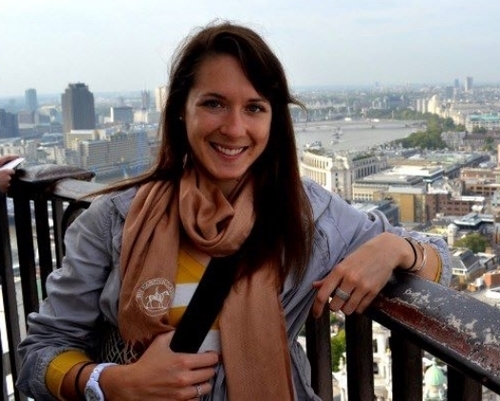
Mary Brindley is a Vermont-born, Boston-based copywriter currently living in London. A recent graduate of the Vermont College of Fine Arts, she writes creative nonfiction and is excited to make her publishing debut on Numéro Cinq.
x
x
 Some of NC’s staff seven years ago, l-r Jason DeYoung, dg, Natalia Sarkissian, & Rob Gray.
Some of NC’s staff seven years ago, l-r Jason DeYoung, dg, Natalia Sarkissian, & Rob Gray.